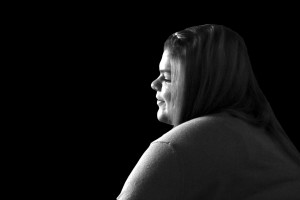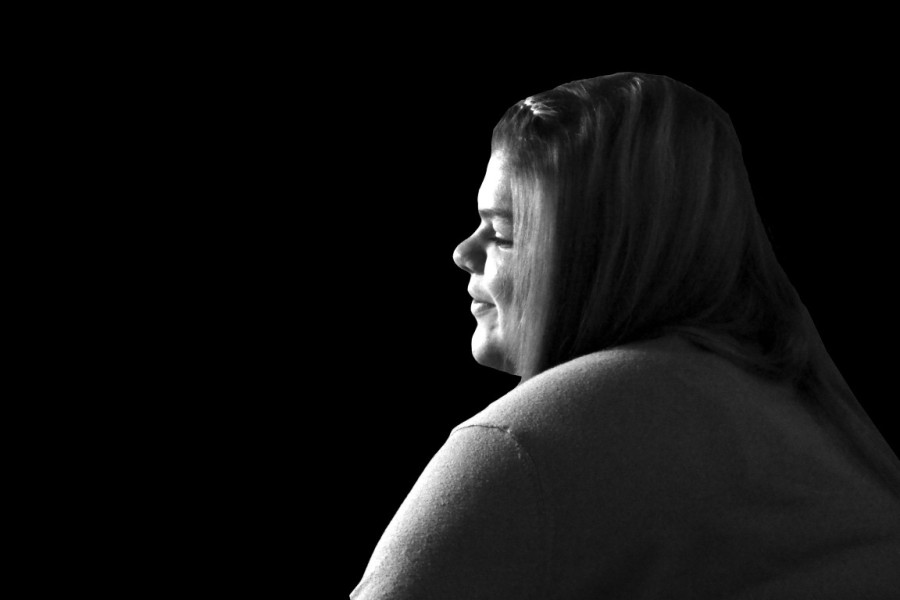“You just feel like you’re in a dark hole, and you just can’t ever get out. You are your own worst enemy. You don’t think anybody wants to help you. It takes over your whole body.”
Before the age of 18, about 11 percent of children experience depression on a daily basis, according to National Institute of Mental Health’s website. Overall, 7 percent of the U.S. population feels depressed, and 20 percent of all women will experience this at one point.
“When society hears somebody has depression, they immediately think they are dark because I don’t think people really know how normal depression is,” Chelsie Roth, a senior who has been dealing with depression for a majority of her high school career, said. “I have met people who have depression, and they are the complete opposite of what people think.”
A big misconception people have is that depressed people do not like being happy and that it is comparable to a curable sickness, according to Roth. She explains how she tries so hard to be happy, but there is a “blockage” in the way.
“During my freshman year, I liked high school, but at some point people would say things to me that I would interpret the wrong way and take to heart,” Roth said. “I would walk past people, and they would be laughing and look at me. Maybe they were just laughing, but I would end up double-checking what I was wearing that day. I would hear the words “fat” or “ugly” and think it was about me without second guessing it. I began to not do the same things I used to. I started to develop depression. I shut the world off.”
Roth realized she had depression when she took the time one day to look up the symptoms and noticed how similar her feelings were to those on the computer screen.
That is the point when she decided to actually reach out for help and believes it was “one of the best decisions I ever made for myself.” Roth still suffers from it today.
“One of my favorite things to do is make others happy. Just to see that smile on their face and know it’s there because of you is the best feeling in the world,” Roth said. “I try my best to raise awareness because what I went through was hell, and I don’t want anybody out there to go through that too. I still have sad days, but they’re not as bad as they used to be.”
In attempt to aid her depression, Roth sees a therapist once every two weeks and has “mentoring” every Monday. The goal of mentoring is to find what she enjoys doing in life as well as what to do when her depression is taking over her day.
Roth is also on medication now to medically help her, but she thinks the hardest thing about depression is seeing people go through what she went through. She recommends those who think they may have depression, even if it is the slightest feeling, to reach out. Admitting to having depression is an individual job, dealing with it cannot be done alone, according to Roth.
“If you really feel like something isn’t right, then you’re right,” Roth said. “You should try and get help, especially with something so common like depression. You will always have a battle to fight. It doesn’t get better overnight; it takes hard work, but it’ll be worth it. People do care about you, and there are people who want to help you.”
On April 1, 2011, Roth posted a “notecard” video on Facebook, revealing her secret about her failed attempt of suicide and her plan to move on from it. She wrote her story on multiple notecards and told her story, one notecard at a time without speaking. With “Why” by Rascal Flatts playing in the background, she made it through the five and a half minute video with a smile on her face. It received numerous likes and encouraging comments from both close friends and people whom she never talked to before. However, the expectations people have set for her recovery are unlike what she is experiencing now, two years later.
“I know that [Facebook] video was posted about two years ago, and I feel like people are expecting me to be a completely different, turned-around person. I have changed a lot since then, but I still stand for everything in that video,” Roth said. “When I say I’m never going to attempt to commit suicide ever again or that I’ll always help people even if I don’t know them, it is something I will never go against. I just remember getting Facebook messages from people after I posted that video, most of them saying something like, ‘I would have never guessed.’ That just shows that people really have no idea what’s on the inside, and it isn’t something to joke about. Besides, we’re all fighting our own battles. You never really know what’s going on behind someone’s mask.”
Roth is aware that some people do not believe she suffers from a mental illness like depression, but she thinks this mentality may be rooted from the original reason she told her story.
“I can’t force them to [believe it.] I think people don’t really believe me because when I started to feel sad, it was more of an attention act,” Roth said. “I think that by doing that, people forever think that I’m like that, but as it got worse, it wasn’t an act anymore. It’s awful knowing people don’t trust what you’re saying, but I want those people to know I am no longer that person that told this for attention, but instead for awareness and prevention.”
Roth also believes it has something to do with the way she acts in public: happy, outgoing, and loving. Happy on the outside, however, does not always mean happy on the inside.
“At school and in social settings, I’m a completely different person,” Roth said. “I don’t act like I’m depressed. I think they see that side of me and think that’s how I am all the time, inside and out. It’s just hard to get across to people that the person [they see] is not who I am all the time. When I’m by myself at night, a different person comes out.”
Her main coping method is to “fake it until you make it,” thinking it will eventually make her feel truly happy, and her supporting peers help her through the times she is unable to fake it.
“In the past, I kept telling myself I was sad, so I was,” Roth said. “When I know something’s wrong and have to act like it’s not, it’s obviously hard. Thankfully, I have people that I can turn to.”
Roth understands how beneficial it is to have someone to constantly turn to, so she tries to be that person for others, especially because she finds school to be the hardest place to “fake it.”
“When I’m at school and this happens, I try not to be so out there on days like that. I won’t exclude myself, but I’ll try to lay back a little bit more. Within 24 hours, it’s over; however, just one day is still too long to be sad, but there’s not much you can do,” Roth said. “Just try to find the happiness in everything. You tell yourself things will never get better, but all you’re doing is stopping yourself from changing that. Life is too important to go through it feeling sad.”


